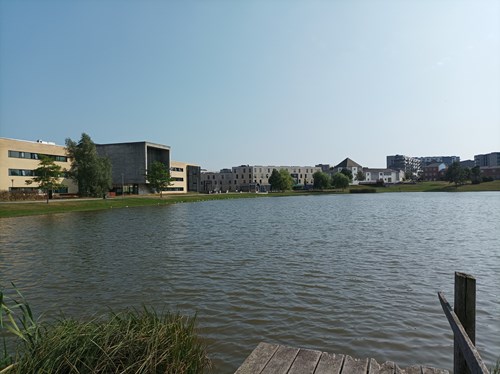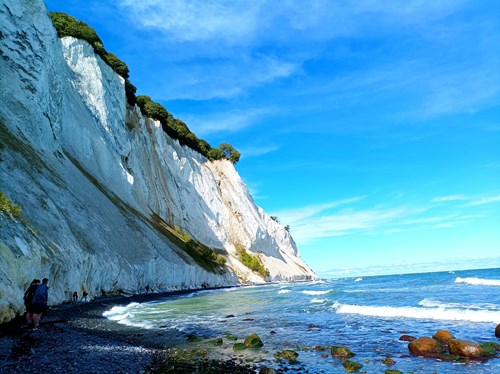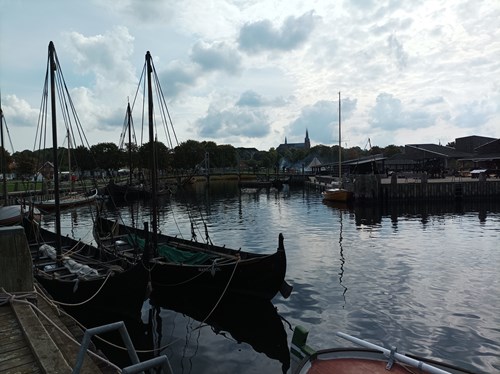I spent an academic year in Roskilde University where I studied environmental science. I arrived in
Denmark in August 2022 and returned at the end of May in 2023.
The first weeks consisted of getting used to the new country, and an orientation week done by the university. During the orientation I met other exchange students, and I spent a lot of time with the exchange students living in the same dorm as I. There were 14 of us from very different countries, most of us were from Europe, but some came much further away, from countries like Canada, South Korea and Mexico. My dorm friends were great people to be around.

My studies started with a field trip, during which we visited sites like Møns Klint, a 70-million- year-old chalk cliff in an island called Møn. Overall, the studies I did in Denmark consisted of courses dealing with environmental chemistry and element cycling, the analysis of environmental data, ecotoxicology, climate change, biodiversity and conservation. The issues discussed during lectures were both global, but also more local, with examples regarding Denmark. Our group of students was quite diverse with both Danish students and international students. Also, all the professors were great: they were genuinely interested in the topics they taught, and they were very approachable, friendly and easy-going.

During my stay in Denmark I traveled the country a little. I visited cities like Århus, Odense as well as Helsingør, and of course, Copenhagen and Roskilde. I went to many different museums during my trip, such as the Viking ship museum in Roskilde, ARoS Aarhus Kunstmuseum, Louisiana in Humlebæk and so on. I visited Århus multiple times. It is a great city with a lot to see from the art museum to the old town. Mainly I went there to get tattoos from a specific place with some amazingly talented artists. Those visits were definitely one of the highlights of my stay.

In addition to cultural places, I also saw many beautiful nature sites such as some nature reserves. Additionally to Møns Klint, I got the chance to see Stevns Klint, a smaller chalk cliff in Zealand. What makes this site so special, and a UNESCO World Heritage Site, is the Cretaceous–Paleogene (K–Pg) boundary, which can be seen in the cliff.
The public transport, especially the train system in Denmark was pretty great. For instance, it was very easy to travel between Denmark and Sweden. It took around and half an hour to travel from Copenhagen to Malmö by train. I also traveled to Stockholm during my stay by train as well.
All in all, Denmark is a great country with a lot to offer from beautiful nature to diverse culture and history. Also, Danish people are very laid-back and friendly. During my studies I learned a lot about different environmental and climatic phenomenon going on in smaller and larger scales, which can and/or will have an effect on the globe in the future.
I really enjoyed the internationality of the studies as well as the internationality of my everyday life, and it is something I would like to definitely keep up here in my home country. I have a small dream of doing a PhD someday, and the issues regarding the Arctic area are something I would like to look at, and the studies and the overall experiences I had during my exchange strengthened these plans.
